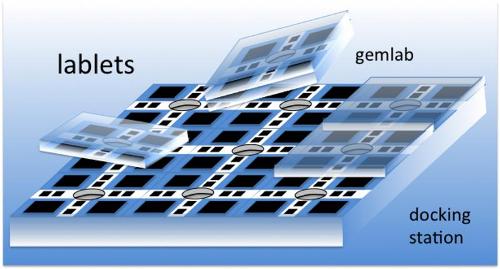The collaborative project titled MICREAgents led by Professor John McCaskill from the Chemistry and Biochemistry Department at Ruhr-Universitaet-Bochum (RUB) has won the first place in the competition, “Unconventional Computing “conducted by the European Union.
 Ruhr-Universitaet-Bochum
Ruhr-Universitaet-Bochum
The award features 3.4 million Euros in support of the project over a three year period. The goal of the MICREAgents project is to develop cellular-sized smart, electronic microreagents capable of self assembly. These microreagents can be poured into solutions to guide complex chemical reactions by exchanging chemical and electronic information.
The MICREAgents (Microscopic Chemically Reactive Electronic Agents) will consist of three dimensional microchips known as lablets which have diameter smaller than 100 µm. The lablets surround transitory reaction compartments by pair self-assembly. By means of electronic signals, the lablets can be made to selectively process, concentrate and release chemicals into the solution surrounding them. The control of the chemical reactions is similar to the control exercised by genetic information coded in cells. The lablets incorporate electronic circuits such as sensors, transducers, transistors and actuator to enable the conversion of electronic information into appropriate chemical processing. Some of the possible chemical processes that can be facilitated by pouring the self assembling electronic microreagents into chemical mixtures are purification of chemicals, transporting components to specified locations, releasing the components as per specifications, detection of completion of reactions and carrying out cascaded chemical reactions.
Though the MICREAgents are expected to advance to the extent of being able to replicate the chemical and electronic information by themselves, they are not considered as an environmental threat as their functioning relies on the electronic circuits incorporated in their substrate.